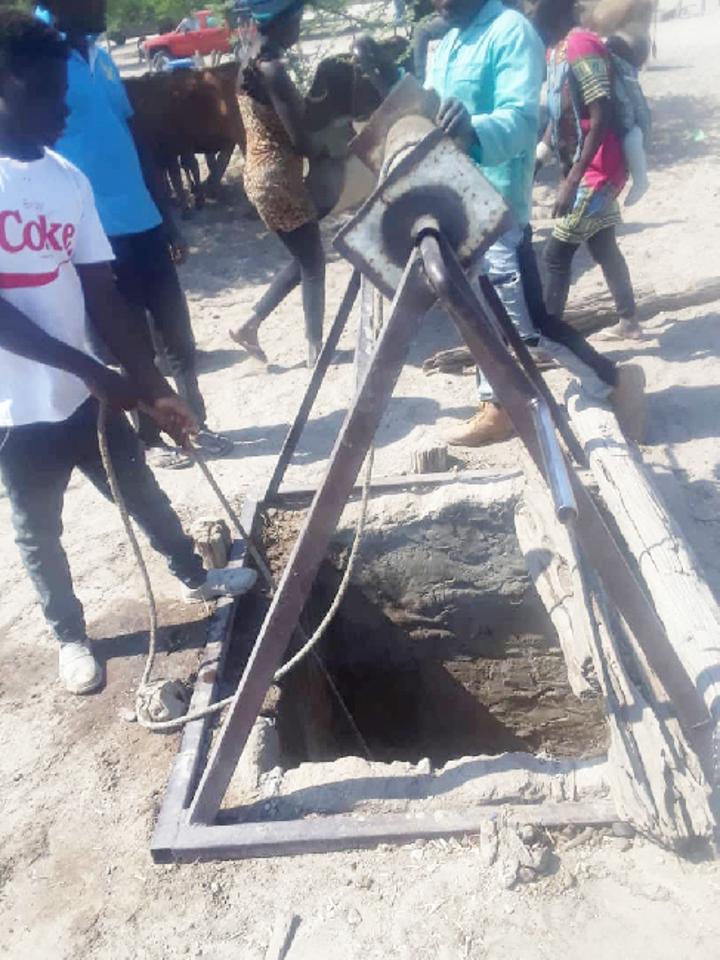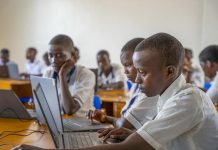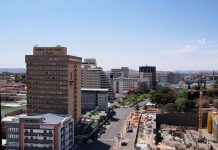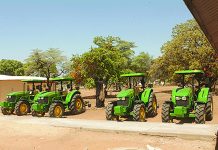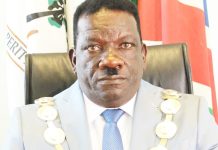Africa-Press – Namibia. THE only tap serving six villages in the Oshikoto region has been dry for the past seven months.
This means the residents of the Onelago No2, Oshana Shepandela, Omupupa, Otatashe, Akazulu, and Onalushishi villages, about 70km north of Omuthiya, have no proper access to water.
Paulus Hangula, the assistant headman of Onelago No2 village, says the last time his village had clean water was in April this year.
He says villagers have resorted to salty borehole water which is not fit for either human or animal consumption, he says.
Villagers who have cars fetch water from Omuthiya and Oshamakaka near Omuthiya, he says, but those who do not have cars have to make use of donkeys for this.
Hangula says some residents have private boreholes, and charge between N$2 and N$4 per container of water.
He says there are five government boreholes at these villages, but they are functional.
“These government boreholes are not in use because the people who drilled them left them up to 100m deep just after they reached the first level of water, and concluded the water is not safe for animal or human consumption,” Hangula says.
‘YOU JUST HAVE TO PAY FOR IT’
A resident of Oshanashepandela village, known only as Tate Vilho, says some villagers charge N$3 per container of water.
“Because you want water, you will just have to pay for it. The distance is too long, and it is very hot for both humans and donkeys,” he says.
“The children at Otatashe go without water for days, and if they get it, it’s salty. Is the government waiting for us to die before they do something?” he asks.
NO WATER FOR COOKING
According to a teacher at Otatashe Primary School, the school feeding programme has come to a standstill as there is no water to cook with.
“There is flour at school, but we cannot cook. Now the bags are being torn by rats,” she says.
School principal David Mushelenga confirms the situation.
“We haven’t had running water at the school since April. We have 118 pupils and seven teachers,” he says.
Mushelenga says the school sometimes receives water from the Ministry of Agriculture, Water and Land Reform.
Hangula says a villager from Onelago at a recent community meeting said her children get sick from eating food cooked with muddy water.
“Some have developed pimples [a rash] all over their bodies . . ,” she said at the meeting.
“I decided to call someone from Onyati village to bring us water. They brought us eight medium containers of water, and two big containers. I paid N$200 for the containers, and N$1 000 for transport. There are 15 children in my house,” she said.
Community members are pleading with the government to construct earth dams in catchment areas at the villages for storing water.
They also suggest the government should build a reservoir at the villages.
“It is so sad how we only have dinner when we have water . . ,” a resident of one of the villages says.
Hangula says they have reported their water woes to Josef Shilongo, the Nehale lya Mpingana constituency councillor.
“He told me they have heard us, and he took our complaint to the office of Oshikoto governor Penda ya Ndakolo,” he says.
Contacted for a comment, Shilongo said he has met with the villagers and also spoke to NamWater.
“The problem is that there is no pressure that can take water to those villages, because the population numbers in those areas are high. NamWater is trying to increase the pressure in those pipes in order for water to reach them,” he said.
Shilongo said this would, however, take time.
WATER TRUCKS, BOREHOLES
“NamWater now is planning to look for trucks to put water into the tanks in those communities. We do not know when this would happen,” Shilongo said.
NamWater spokesperson Johannes Shigwedha did not respond to questions sent to him.
Ya Ndakolo asked: “Is that a story to write about?”
Meanwhile, water ministry spokesperson Jona Musheko says the ministry is at an advanced stage of drilling, rehabilitating and installing boreholes at the Nehale lya Mpingana and Guinas constituencies.
“In areas such as Onalushetete, we are going to do a deep borehole drilling, around 300m deep, with a view to get good drinking water similar to that in the Ohangwena aquifer,” he says.

